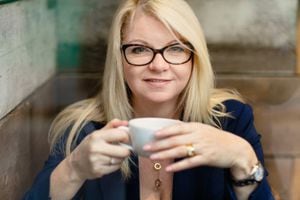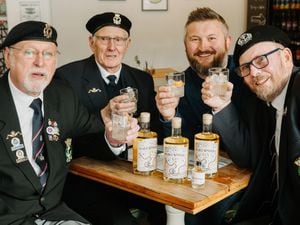Unusual talent - what it's like to read faces for a living
Every face is as unique and individual as the owner’s personality and character.

But despite our different appearances, we all express basic emotions from sadness to anger in similar ways.
And by taking a look at our face, Adrianne Carter knows exactly how are feeling at any given time.
Known as The Face Whisperer, she’s been studying facial expressions for 15 years and recently appeared on ITV’s This Morning talking about the Duke and Duchess of Sussex’s body language.
“I have always been interested in people from a very young age and trying to understand their behaviour and why they do what they do.
“I realised my talent when I my awareness grew, and I could tell how people were going to react or behave based on what their face was telling me,” Adrianne tells Weekend.
In 2010, she went to the University of California, Berkeley, and trained with Dr Erika Rosenberg in the Facial Action Coding System – this is a scientific method of coding facial movements.
“This is the highest accredited training in the world and I passed the final test in that same year.
“Many people learn about faces but don’t take the final test as it is a laborious process,” she explains.
Around the globe people speak in different native tongues and Adrianne, who lives in Lichfield, says the face is actually the closest thing we have to a universal language.
“Whether a person is born in Birmingham, Bolivia or even born blind we all have the seven same universal facial expressions for the following emotions – anger, fear, happiness, surprise, sadness, disgust and contempt.
“The trigger for the emotions is unique to each individual but the way it is displayed on the face is universal.
“There are many more emotions possible to be seen on the face, but they aren’t universal, they may be culture specific,” she explains.
The ability to read faces and understand the emotions being expressed can have been benefits.
“If you know how someone really feels from reading their face, you can adapt your service, offering or product so that the person will buy, or you’ll know when they don’t intend to buy.
“When training commercial teams and they implement the learnings they gain at least a 20 per cent uplift in sales.
“Another benefit for personal and professional people is you can tell when someone is wasting your time and being polite or stringing you along. You’ll much easier weed out any deception too.
“Reading faces helps you ask better questions too, to get to the truth of how another person really feels despite what they say,” Adrianne explains.
To be a successful face reader, it’s important to be interested in what makes people tick.
“Most people can be taught to read faces, but some people definitely have more aptitude than others. One of the key traits a person needs is an interest in other people and why they do what they do.
“Non people people usually struggle to read faces because they don’t have a genuine interest in others and miss the signs of communication. These are the people that need the skill more than anyone because they are so often misunderstood and misunderstand.”
Face reading can be a handy skill to use in a variety of different situations where there is an interaction with another person such as sales.
“By knowing how people really feel from the face you can know whether you have converted them to a sale, the person still has more questions or are definitely not going to buy,” says Adrianne.
It can also be deployed in a healthcare setting. “Some people are genuinely ill and struggle to verbalise their feelings, reading the face helps with this.
“Some people are not genuinely ill and reading the face helps to see when they are being deceptive,” Adrianne tells Weekend.
The skill can be used in the security industry as she says the face will show the emotion and intent for what behaviour will follow.
“I sit in negotiations and high-level meetings as an independent consultant to ensure the win/win for both sides.
“Many customer service issues can be avoided in face-to-face scenarios if the representative knows by face reading how to respond appropriately to a customer.
“A person who can read faces, raises their empathy skills massively and is aware of what’s going on for other people around them and can be the first step in supporting mental health issues,” she adds.
Face reading can also provide hints that someone is not being entirely truthful.
“There is no one sign of lying. If you can gauge a baseline of a person’s behaviour, when that behaviour changes it gives you an indication that there is something going on for them.
Adrianne’s job is very rewarding and she particularly enjoys the variety of projects and people that she comes into contact with.
“I don’t feel like I work most of the time because I’m enjoying the random and interesting projects,” says Adrianne.
“Many people are surprised as the levels of knowledge I can have about a situation even when I don’t know the people involved.
“Observing faces and behaviour has become second nature and I know what’s really going on which makes it look like I’m a psychic but I have lived and breathed this for many years and thousands of analyses,” she adds.
There have been many memorable moments during her career so far including one project which saw Adrianne having to drink G&Ts while analysing the service she received.
Adrianne was also asked to sit in on a negotiation for a brand and retailer to negotiate terms for the next year’s trading and helped both sides fully understand the needs and how to ensure it was a winning situation for the two parties.
“The brand and retailer went on to make millions because they took the time and an expert in communication to the table,” she says.





